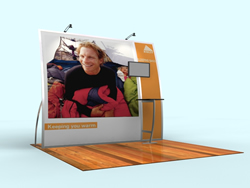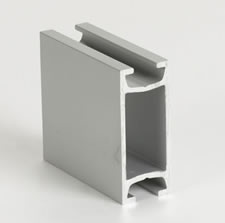Whenever we conduct an Exhibit Design Search (EDS) webinar, we reserve 5 -10 minutes to review the Classic Hybrid product lines. We have five hybrid lines . . . well kinda. In reality, we have six or seven or even eight if you toss in the rentals, table tops, several Euro LT designs, and even Eco-systems Sustainable (which is a separate company but represented in EDS). It can be confusing.
The Classic distributors who attend Shared Knowledge University (SKU), our comprehensive training program, hear the history and the explanation of our hybrid lines. They always tell us that what was confusing, now makes sense. So, over the next few weeks, I’ll do my best to encapsulate the SKU review into a series of blogs about the Classic Hybrid lines. We’ll begin with Magellan.
What Makes a Magellan a Magellan?
Magellan Hybrid Displays was Classic’s third hybrid line, launched (if I remember correctly) in late 2008 or early 2009. I remember very, very clearly why we created the Magellan line, and in particular, the Magellan Miracle. Several months into The Great Recession, sales of our existing hybrid lines, Visionary Designs and Perfect 10, had stalled. We were hearing from distributors that price, while always a factor, was now paramount. We knew we needed to react quickly, but we didn’t want to create a basic aluminum box with a graphic. It had to have “presence,” but be less expensive than a Perfect 10.
Many of you have heard me say the price of a hybrid is not complicated. There are three major elements: the metal (size and shape of the profile, straight, or curved), the graphics (size and quantity), and the accessories and components. You can add a four element if you collectively include design, assembly, and packaging, which also contributes to the price. To reduce the cost of a hybrid, you use less expensive profiles, have fewer bends, smaller or fewer graphics, and limited accessories.
The Magellan line is (almost exclusively) built with the Z 45 profile. Why the Z 45? It’s relatively inexpensive, extremely versatile, and very attractive. In addition, our metal bending expertise allows us to bend it in both directions (what we call the hard and soft edges). That means the Z 45 can be used as both a horizontal and a vertical, and bent to create a variety of interesting shapes.
Miracle
The Miracle was the first Magellan. Like the Perfect 10, it has two large fabric graphics, each 96 in. tall. And, like the Perfect 10, the verticals are curved. However, the Miracle has less extreme curves, fewer accessories, and a limited set of options. The Miracle, as with all Magellan Displays, is a “Knob-assisted Assembly” system, meaning that about 85% of the assembly uses attached knobs. Where a knob would be visible or impractical, a hex key tool is required. These changes allowed us to price it about $1300 less than a comparable Perfect 10.
Fortunately, the Miracle was an instant success. One distributor was so sold on the concept (and hungry for sales) that she based her entire quarterly marketing campaign on the Miracle. It saved her quarter and jumped started her year. The positive feedback encouraged us to create other Magellan designs, some with similar price points such as the MOR and the Magic. But we didn’t stop there. The versatility of the Z 45 meant we could design more intricate, more upscale, and more expensive designs such as the VK-1043 and VK-2056.
So, when should your client consider a Magellan Hybrid? There are two directions:
1. Limited Budget/Attractive Design
- 10 ft. and 20 ft. Inlines
- A budget that won’t stretch for a Visionary Design or a Perfect 10
- Your client requests a portable system that they can assemble at the show
- They want something more than a basic curve, box, or pop-up
- They want large vibrant fabric graphics
- They need a workstation for a monitor
- Die-cut reusable foam packaging and numbered components
- Examples: Miracle, MOR, Magic
2. Larger Budget/Distinctive Design
- 10 ft and 20 ft. Inlines
- Larger, more flexible budget
- Loves curves. Wants the booth structure to be unique
- Likes the idea of portability, whether they need it portable or not
- Needs counters, workstations, headers, multiple large fabric graphics
- Die-cut reusable foam packaging and numbered components
- Examples: VK-1083, VK-1085, VK-2049, and VK-2045
Next time, we’ll review Perfect 10 Portable Hybrid Displays. That’s an interesting tale of what happens when you discover a major, untapped segment of the market that EVERYONE has ignored.
–Mel White
http://www.linkedin.com/in/melmwhite
mel@classicexhibits.com
**********************************************
Based in Portland, Oregon, Classic Exhibits Inc. designs and manufacturers portable, modular, and custom-hybrid exhibit solutions. Classic Exhibits products are represented by an extensive distributor network in North America and in select International markets. For more information, contact us at 866-652-2100 or www.classicexhibits.com.
[subscribe2]




















